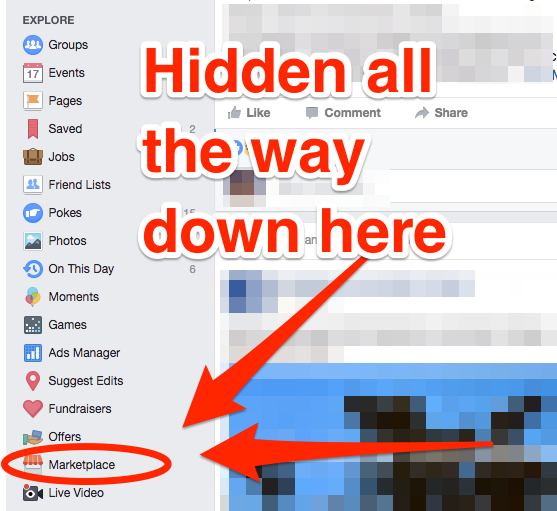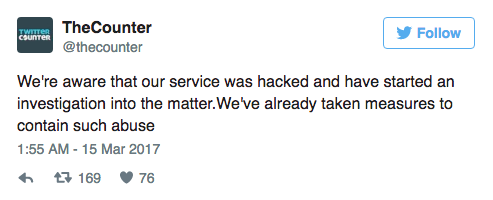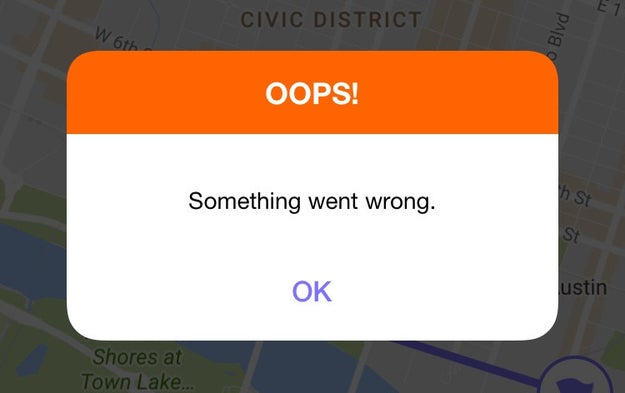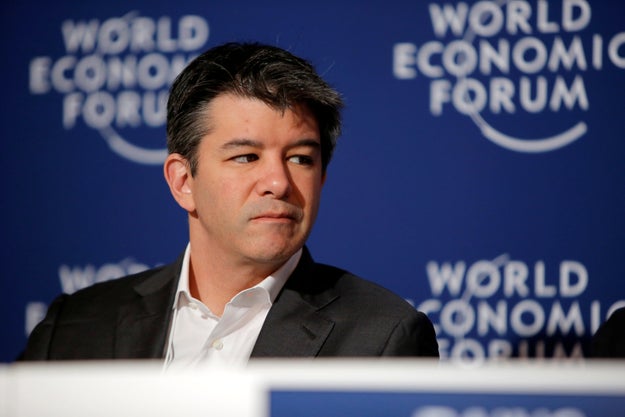
Gabe Rivera was halfway through his lamb gyro when it became clear he’d been spotted. It was the middle of the lunch rush at a bustling upscale food court in downtown San Francisco and Rivera was looking to maintain a low profile. His plans were foiled when a PR rep for a mid-sized tech company picked Rivera’s messy head of hair out from the crowd and headed over with an enthusiastic grin to invite him to an industry party that evening.
Rivera had, of course, already been invited, but responded graciously. The rep, clearly thrilled by the serendipitous encounter, hovered over Rivera at the reclaimed barnwood table, burbling small talk; at one point, before leaving, the rep closed his eyes and shook his head — as if having just tasted something divine — and uttered something to the effect of “as always, loove the site!” Rivera’s face was equal parts cordial and uncomfortable.
When we’d been left alone, I asked if fans often approached when he ventured out in San Francisco. Rivera was dismissive. “I'd say Techmeme is still really a very niche site,” he told me later.
Techmeme wields tremendous power over a tremendously powerful group of people.
This modesty was somewhat misplaced. Techmeme may be a niche site compared to the Facebooks and the YouTubes of the world, but the tech-news aggregator influences the people who make the Facebooks and the YouTubes of the world: Mark Zuckerberg and Sundar Pichai are both confessed readers, as are LinkedIn’s Jeff Weiner, former PayPal exec and current Facebook Messenger head David Marcus, former Twitter CEO Dick Costolo, and Microsoft’s Satya Nadella. Hunter Walk, a former product manager at YouTube turned seed-stage venture capitalist, told me he checks the site three to five times daily. “It’s one of my first morning sites,” he told me over email. “My perception is that lots of us [in Silicon Valley] use it.” That includes journalists: Rivera’s taste in that day’s news often dictates what stories are followed and chased by newsrooms across the country. Without writing a word himself, Rivera is shaping tech’s story for the legion of reporters and editors tasked to tell it.
Techmeme, then, wields tremendous power over a tremendously powerful group of people. And as its founder, Rivera has been quietly defining Silicon Valley’s narrative for the industry’s power brokers for more than a decade. But Rivera is uncomfortable — or unwilling — to reckon with how his influence has affected one of the most important and powerful industries in the world. The result is that Rivera can cast himself both as a gimlet-eyed insider with a powerful readership and as a mostly anonymous entrepreneur running a niche link blog from the comfort of his home. It’s a convenient cognitive dissonance.

A snapshot of Techmeme (then known as tech.memeorandum) on January 1, 2006.
Rivera is 43 but looks a decade younger. He is sarcastic, self-deprecating, and gently neurotic. He speaks in meandering sentences that often circle back to revise themselves, and carries himself with what one person I spoke with described it as “an economy of movement with shifty eye contact and a lack of aggression that’s self-assured.”
Rivera worked as an engineer at Intel in the early aughts before launching Techmeme in 2005 as an automated news site that rounded up links from mainstream outlets and obscure technology blogs. He’d already built Memeorandum, a politics aggregation page with a similar look and feel (and has since expanded with a media property called Mediagazer). Both properties were a solution to the now-quaint problem of cluttered RSS feeds, offering the best of the news in their various subject areas, and both took off in their own small corners of the internet. In 2008, to boost the quality and diversity of stories on the site, Techmeme switched to human aggregators.
Everything about Techmeme and its lingering success seems to defy the contemporary wisdom of building a popular website. It publishes zero original reporting and is not a social network. It doesn’t have a mobile app or a newsletter or even much of a social presence beyond its Twitter account, which posts dry commodity news with zero flair for clickability. Revenue comes from sponsored posts and a “who’s hiring” page (Rivera makes a point not to seek any outside funding). Its headlines are typically fact-spattered and unwieldy synopses of the stories they tout; consider, for example, the perfectly serviceable TechCrunch headline “Facebook & Google Dominate The List Of 2016’s Top Apps,” which Techmeme transformed into this grand mountain range of a title: “Nielsen&039;s 2016 top apps by monthly uniques: Facebook, up 14% YoY to 146M; Messenger, up 28% to 129M; and YouTube, up 20% to 113M; Amazon hits #10, up 43% to 65M.”
Everything about Techmeme and its lingering success seems to defy the contemporary wisdom of building a popular website.
For its first seven years, Techmeme retained the look of the cluttered, aggressively hyperlinked design fever dream of the mid-2000s web; after a 2012 redesign, it now looks like a text-only newspaper homepage and still eschews the most bare-bones navigation features. In an era where the homepage is thought to be on life support, Techmeme is basically nothing more than exactly that, full of wonky text.

A Techmeme headline reporting on a competitor from 2008.
And yet. Run a search query for “Techmeme killer” and you’ll see a graveyard of old headlines for failed experiments like ePlatform, New York Times Blogrunner, Google Blogsearch, and something called Newspond. They&039;re all gone now, and Techmeme persists. Not even Twitter has fazed it.
Google Ventures general partner and former TechCrunch writer M.G. Siegler told me most reporters he knows check the site regularly. “The same also seems to be true of many VCs I know,” he said via direct message. “It&039;s simply the best way to quickly get caught up on what you need to know in our industry.” Joe Brown, the editor-in-chief of Popular Science, described Techmeme as the ultimate insider enthusiast publication. “It’s a small restaurant that serves your favorite dish. And for people that are interested in technology, just knowing about Techmeme is kind of its own reward and carries its own kind of status.”
Chris Dale, YouTube’s global head of communications and public affairs, is a self-confessed “Techmeme addict” and has a Techmeme bookmark on his home row, which he checks religiously between meetings (since there’s no app). “After email, it&039;s the first thing I check in the morning, he told BuzzFeed News. “If your company&039;s trending on Techmeme for something good, it&039;s great validation. If you&039;re trending for something bad, you know you&039;re in for a rough couple of days.”

Put it that way, and Rivera sounds an awful lot like, well, a journalist. Techmeme publishes 30–40 stories a day out of thousands, which means Rivera and his team are constantly making choices about which narratives are important and which are not. It’s not unlike an editor-in-chief slotting stories for Page One.
“Say there’s a story about sexual harassment in a company,” Rivera said. “To what extent do we cover this? If we cover every tiny iteration of the scandal, do people think we are championing this as an issue too much? Is Techmeme turning into an advocacy platform for this issue?” (Ultimately, Rivera has settled on covering cultural topics to the extent that they matter to the industry, or to a given company’s bottom line.)
Just as interesting is what Techmeme’s chosen not to cover. A search on Techmeme for Theranos — arguably the biggest tech scandal of the last few years — turns up only four results, none by the Wall Street Journal, which broke the story of the company’s fraudulent technology. Rivera told BuzzFeed News that the decision not to cover the Journal’s reporting on Theranos was because the site doesn’t follow medical technology (or other niche tech spheres like space or food tech).
When I asked if he views himself as a journalist, Rivera seemed uninterested in the classification. “I guess not? I mean, I don’t care. It’s just a definition,” he said. “It’s a purely semantic thing. We do journalistic things and I edit the editors, so…sort of?”
“When I care deeply, I try to bend the debate. And I usually succeed.”
It felt like a genuine answer, but still, that casual and self-effacing attitude can serve to play down the burden of responsibility that comes with running a site that decision-makers in key companies read every day. For example, when asked in 2014 about traffic by Business Insider, Rivera told the site, “Monthly uniques are a particularly bad stat for aggregators like Techmeme.” That’s not untrue; Techmeme’s reach extends beyond homepage views — but it&039;s also a convenient way of dodging the question.
And after all, though Techmeme’s team of editors does discuss and vote on controversial coverage decisions, Rivera admits he often has final say. “When I care deeply, I try to bend the debate,” he said. “And I usually succeed.”
I asked to meet Rivera mostly out of my own intensely conflicted relationship with his website. For years now, I’ve bemoaned Techmeme’s leaderboard system, which ranks journalists both by presence (how frequently they&039;re featured on Techmeme) and leadership (how frequently they&039;re linked to in other tech posts). During tech’s gadget blogging heyday, Techmeme’s leaderboards often sparked an exhausting competition among publications scrambling to be first with a press release microscoop or unboxing video. Those days are now largely over, though Rivera notes that occasionally reporters will squabble on Twitter over which story deserved to be picked up by Techmeme, much to his delight. (“That’s really fun — I love when that happens.”) But Techmeme still plays a singular role in spurring journalists to chase a particular type of content: inside-industry scooplets — executive shuffles, product updates — that might matter more to venture capitalists and CEOs than the millions of civilian tech consumers.

Techmeme&039;s leaderboards.
In a 2011, Siegler published a post arguing that “tech blogging is a game” with only three key elements “that matter: pageviews, scoops, and Techmeme.” He continued, “Techmeme is the most fascinating game. Everyone in the industry reads the site, and all serious tech bloggers know where they stand on the Leaderboard.” “I think Techmeme was absolutely an enabler of that inconsequential blogging crap, which I suppose is the bad part of being around so long,” said Brown.
Techmeme still plays a singular role in spurring journalists to chase a particular type of content.
As tech coverage has moved away from gadget reporting and more toward the business and culture of the industry, the leaderboard pandering has faded some, but the site’s influence remains in the back of the minds of reporters and editors. “Techmeme has an influential audience, and so I’ve always felt like being featured there was a nice validation that you’d contributed something meaningful,” Casey Newton, the Silicon Valley editor at The Verge, told BuzzFeed News. “I don’t write stories to get on Techmeme — I write stories because they’re news. But I’m always glad whenever Techmeme’s editors feature my stuff.”
Looking at Techmeme’s leaderboard and its top 30 publishers, it’s clear that the site tends to favor insidery blogs, many of which feature high-volume work like product announcements and updates over in-depth reporting and analysis. TechCrunch, a trade publication long known as a home for near-comprehensive, bloggy coverage of tech, has been at the top of Techmeme’s leaderboard since the aggregator’s earliest days. The two publications have something of a personal history together. Rivera rented a room from TechCrunch founder Mike Arrington shortly after Techmeme launched. Rivera also dated a TechCrunch writer, Alexia Tsotsis, who in 2012 became the site’s co-editor.
Rivera, for his part, disputed the idea that these personal relationships even hint at a possible conflict of interest. While he conceded that TechCrunch&039;s Arrington-authored early coverage of Techmeme “definitely helped” raise the site&039;s visibility, he argued that it was tech enthusiast Robert Scoble that put it on the map in 2005 with a few favorable blog posts. “We don&039;t give preferential treatment to publications,” he said.

Techmeme&039;s front page as of this writing.
After our lunch, in a stark conference room in BuzzFeed’s San Francisco bureau, Rivera opened his laptop to check on the site. Toggling between a Slack chat and the window where Techmeme’s software routinely crawls over 11,000 sites and blogs, Rivera sifted through a cascade of tips before turning his attention to the site’s innards and the tools editors use to rank stories. “Ugh, we really need to work on design,” he sighed. “But I guess, in a way, that’s kind of who we are.”
Rivera seems to be one of the few people in Silicon Valley unconcerned with scale.
Staring at the guts of his decade-old creation, Rivera seems to be one of the few people in Silicon Valley unconcerned with scale. And it&039;s somewhat refreshing or reassuring. Or both. Unencumbered by growth metrics, Techmeme has so far succeeded while shirking pretty much all the trappings of modern publishing. It&039;s not incentivized to post original work or to post the work of others in volume, or even to prod readers into clicking through to the stories it aggregates. And you won&039;t find it seeking eyeballs on Snapchat Discover or experimenting with live video on Facebook. In that sense, Techmeme is less a publication or “portal” than it is a daily ledger, and Rivera its scrivener — a guy turning out a steady and deadpan accounting of the daily life of a flashy, fast-moving industry. It suits Rivera just fine.
Quelle: <a href="Meet The Man Whose Site Mark Zuckerberg Reads Every Day“>BuzzFeed


























